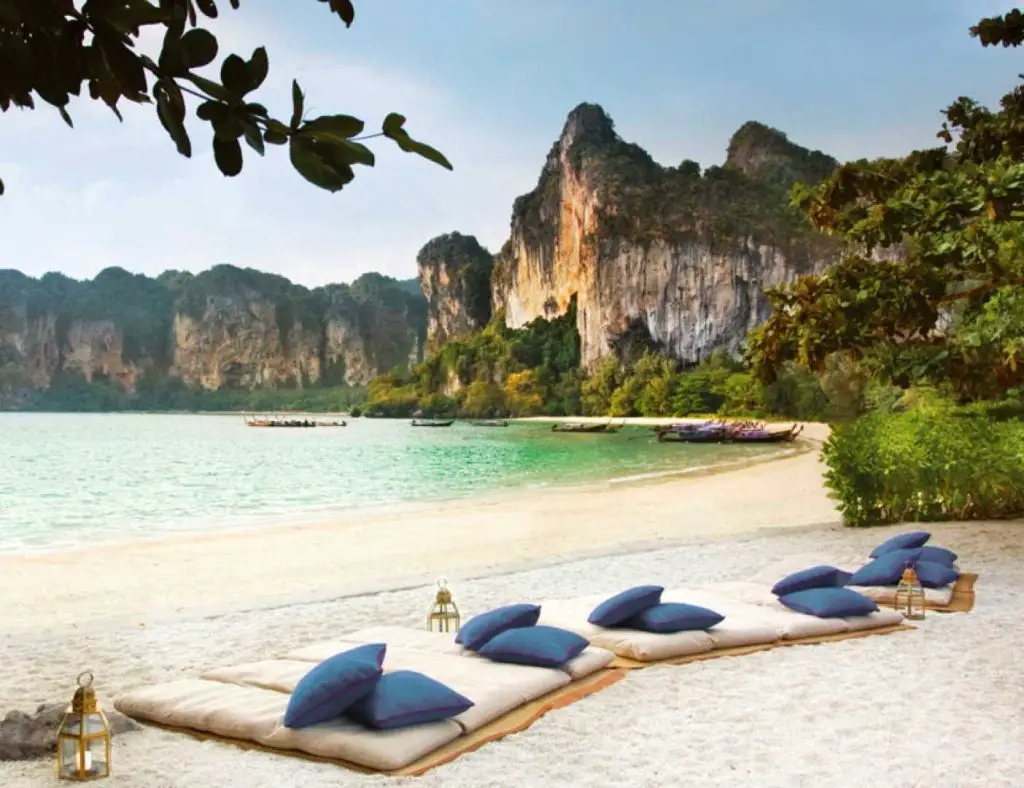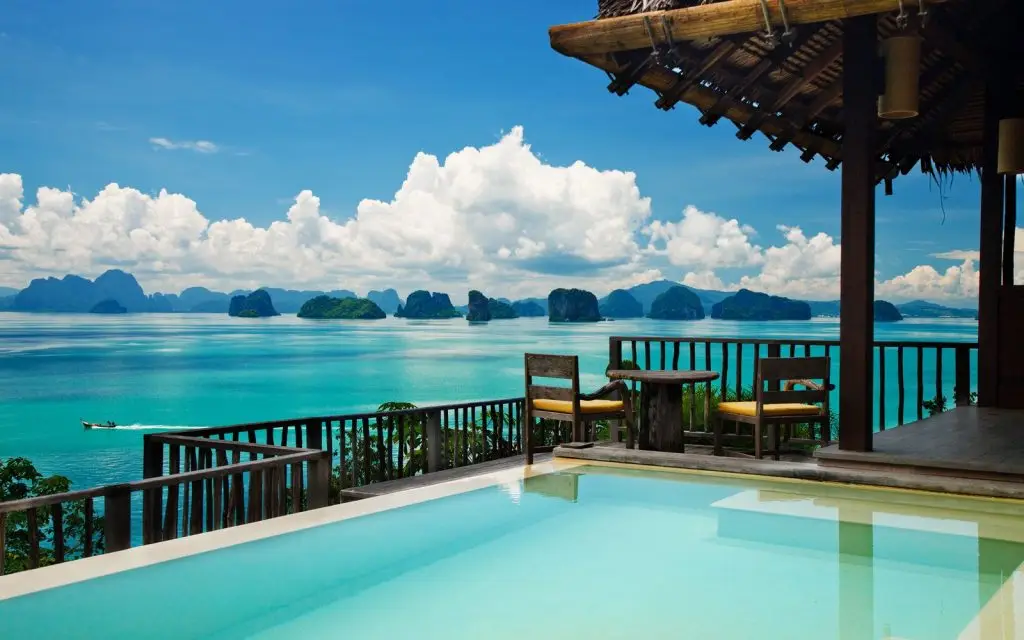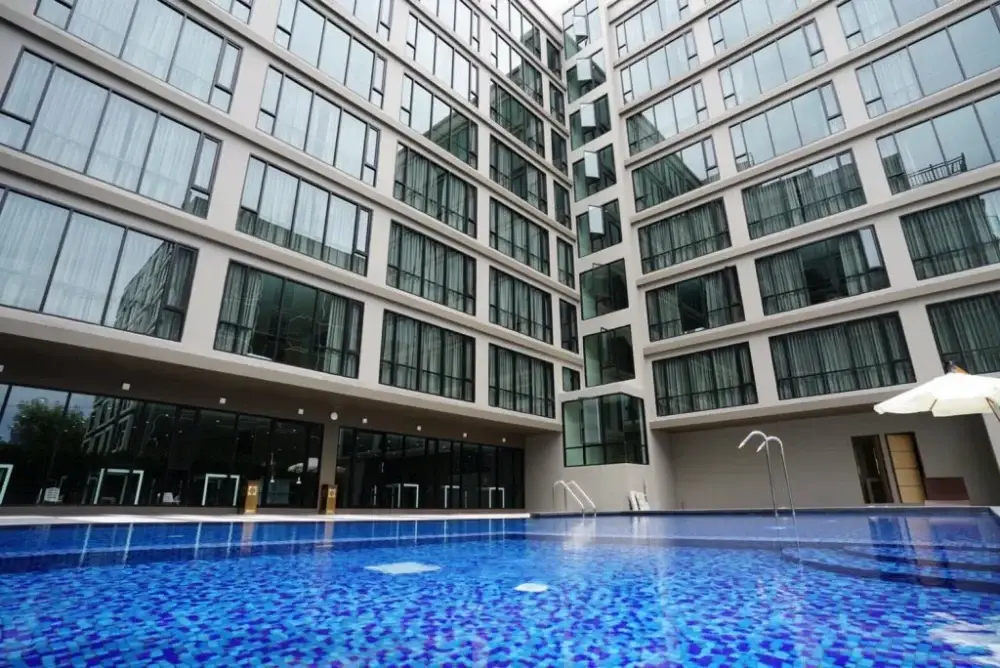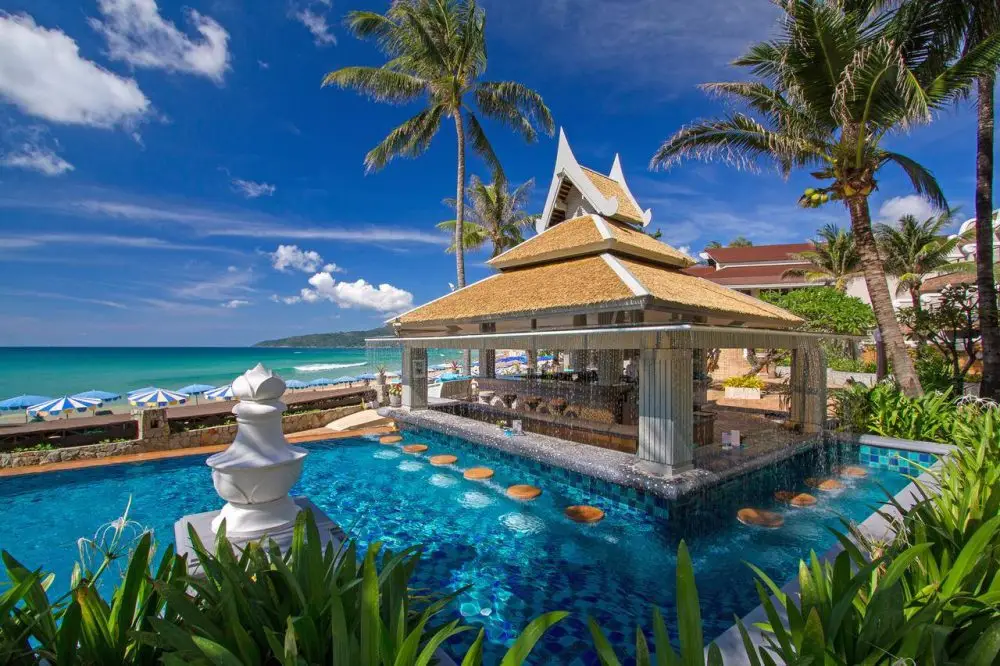Thailand is a mosaic of a thousand shades: each resort is like a separate fragment, which together form the perfect holiday picture. There is everything from boisterous fun on the beaches to peaceful sunsets among coconut palms. It is here that every form of holiday imaginable is possible, whether it’s adventure in Phuket, relaxation in Samui or a busy entertainment life in Pattaya. Let’s immerse ourselves in the atmosphere of each and find the place that will be the fulfilment of a dream.

Phuket is a paradise for adventure lovers and comfortable holidays
Thailand’s largest island and one of the most popular destinations for travellers from all over the world. Locations that combine the wildness of nature with the glamour of modern resorts. The coastal paradise offers the perfect combination of adrenaline-pumping activities and relaxing holidays. From elephant rides to sumptuous dinners overlooking the ocean, there is something for everyone.
Beaches in Phuket: from secluded nooks to party spots
 In the centre of the tropical resort, there are beaches for every mood:
In the centre of the tropical resort, there are beaches for every mood:
- Patong is the heart of nightlife. It’s always buzzing with music and every night is a celebration. Patong is the perfect destination for those looking for a fun and exciting holiday.
- Surin is quieter and more prestigious. It is chosen by those who value comfort and privacy. White sand and clear water make it an excellent option for family holidays.
- Karon is one of the longest sand lines. It is spacious and has room for everyone: sunbathers, people who appreciate walks along the beach and active sports.
Entertainment and excursions
The resort of Thailand Phuket gives a lot of opportunities for active holidays. Here it is worth visiting excursions, which will allow you to see the island from a different side. Tourists can climb the hill to the Big Buddha statue, one of the symbols of the tropical enclave, which offers spectacular views. And a trip to Fantasia, a unique show in Phuket with elements of circus and theatre, where you can experience all the magic of Thai culture.
Don’t forget attractions like Chalong Temple, the largest sanctuary on the island, which is famous for its architectural beauty and history. You can also take a boat trip to the Phi Phi Islands, which are known for their picturesque coastlines and crystal clear waters.
Samui is a fusion of luxury and nature
A magical combination of luxury resorts, cosy beaches and magnificent scenery. The paradise piece of land is known for its upmarket villas, which are lost amongst coconut groves, and peaceful vistas. It offers a tranquillity that is sometimes sorely lacking in the cities. Thailand’s Samui resort is about relaxation and savouring every moment.
Samui’s best beaches for different types of holidays
- Chaweng is the most popular in Samui. It has a lively atmosphere, plenty of bars and restaurants, and the water is always clear and warm. Suitable for those looking for active holidays and parties.
- Lamai is a more tranquil space where you can enjoy nature and peace. The option is chosen by families and couples looking for romance and privacy.
- Bophut is a fishermen’s village that has retained its authenticity. It is suitable for those who want to experience the real atmosphere of Thailand and taste the local cuisine.
Samui tours: from temples to waterfalls
One of the best ways to get to know Samui is to go on excursions. Thailand programmes in Samui include a visit to the Big Buddha, a majestic statue towering in the north of the island, and a walk to Namuang Waterfalls, surrounded by rainforest. Each waterfall offers cool coolness and tranquillity, perfect for a hot day.
Also worth a visit is the Laem Sor Temple, a unique structure with golden tiles that looks particularly impressive against the blue sea. You can also head to Koh Tao, which is considered one of the best places for snorkelling and diving.
Pattaya Resort is a city in Thailand for fun and unique experiences
Pattaya is known as the entertainment capital of Thailand. There is always something going on here: parties, concerts, shows. But apart from nightlife, there are many other interesting activities here. Holidays in Pattaya are suitable for those who like an eventful holiday.
Entertainment in Pattaya: from water parks to nightclubs
Pattaya offers a variety of entertainment for all categories of tourists:
- Ramayana Water Park is one of the largest water parks in Asia. There are dozens of slides and attractions suitable for both children and adults.
- The Pattaya Lookout is a great place to admire the view of the city and ocean, especially at sunset.
- Woking Street is a famous street with a concentration of clubs, bars and restaurants. This is where Pattaya comes alive at night and becomes the city that never sleeps.
- The Temple of Truth is an amazing wooden structure that reaches a height of 105 metres. Here you can see unique carved sculptures reflecting the philosophy of life and traditions of Buddhism.
Diving in Pattaya: Discover the underwater world
Diving in Thailand is an adventure in its own right, and Pattaya provides plenty of diving opportunities. Locations such as Koh Lan offer crystal clear waters and a variety of coral reefs where you can encounter a host of colourful marine life. The underwater world here is as beautiful as the famous resorts of the Maldives.
It’s also worth going diving off the coast of Ko Sak, which is famous for its underwater caves and rich marine life. A variety of fish, rays and even small sharks can be found here, making diving particularly exciting.
Conclusion
 Phuket is mesmerising with adventure and excitement, Samui is quiet and luxurious and Pattaya offers endless fun. In the beautiful country, everyone will find a place that suits their expectations and dreams. This is what makes the best resorts in Thailand so popular among travellers – they offer unique experiences that will last a lifetime.
Phuket is mesmerising with adventure and excitement, Samui is quiet and luxurious and Pattaya offers endless fun. In the beautiful country, everyone will find a place that suits their expectations and dreams. This is what makes the best resorts in Thailand so popular among travellers – they offer unique experiences that will last a lifetime.
Regardless of your choice, a holiday in Thailand will leave you with unforgettable memories and emotions that you will want to experience again.

 en
en  ar
ar  de
de  es
es  fr
fr  nl
nl  hi
hi  el
el  it
it  pt
pt 










